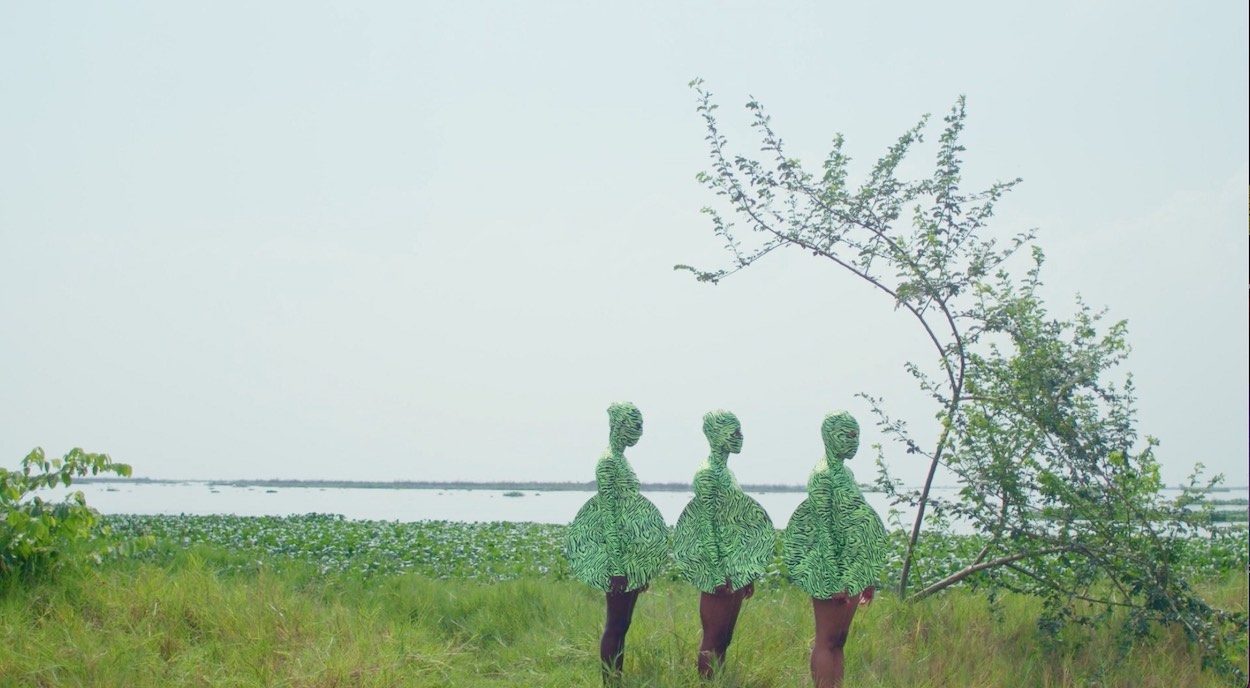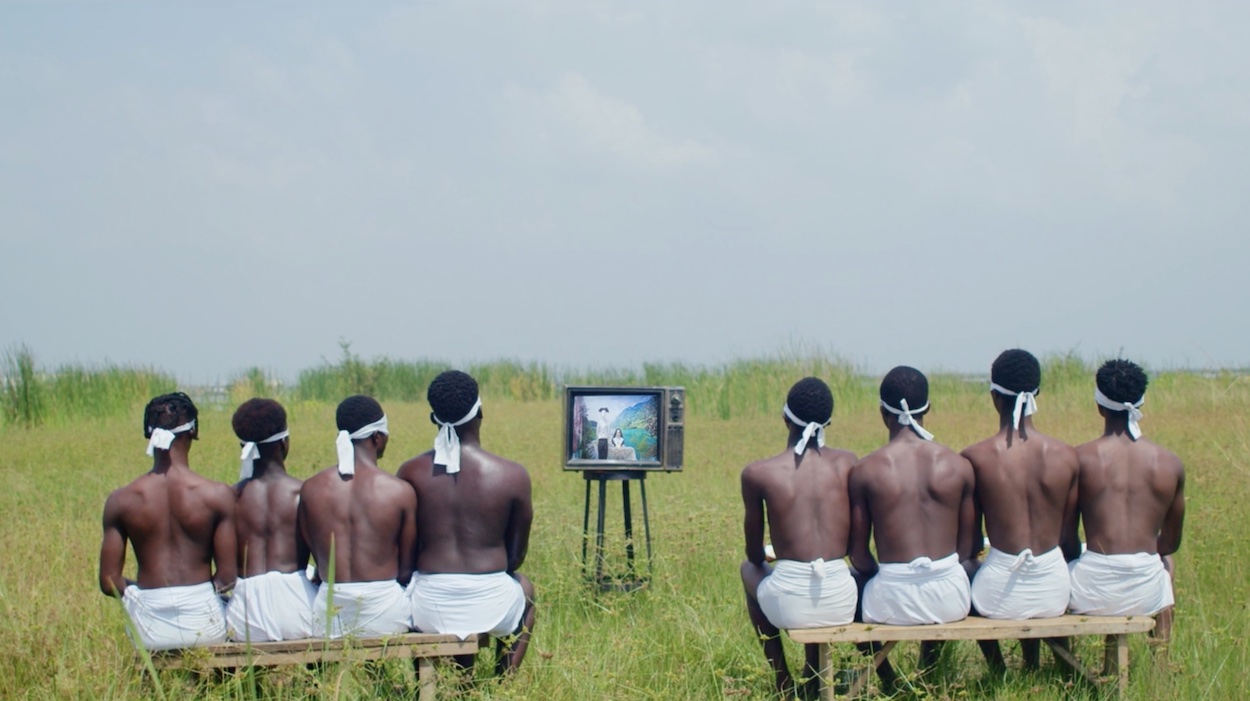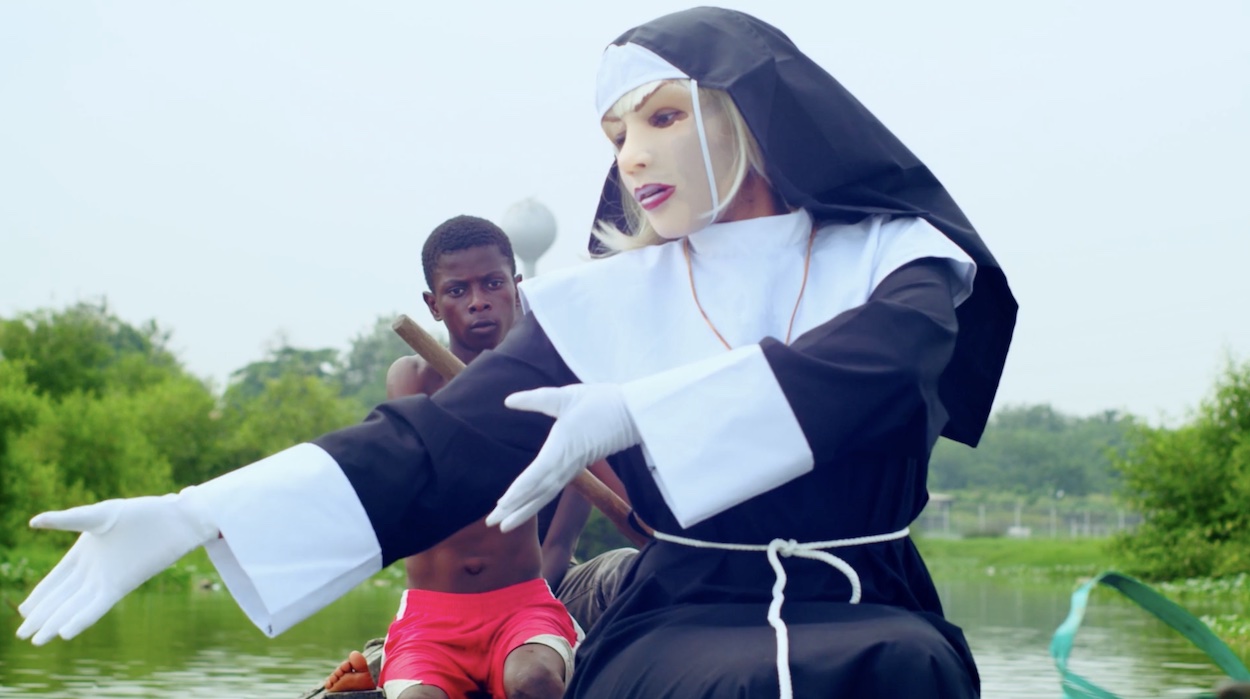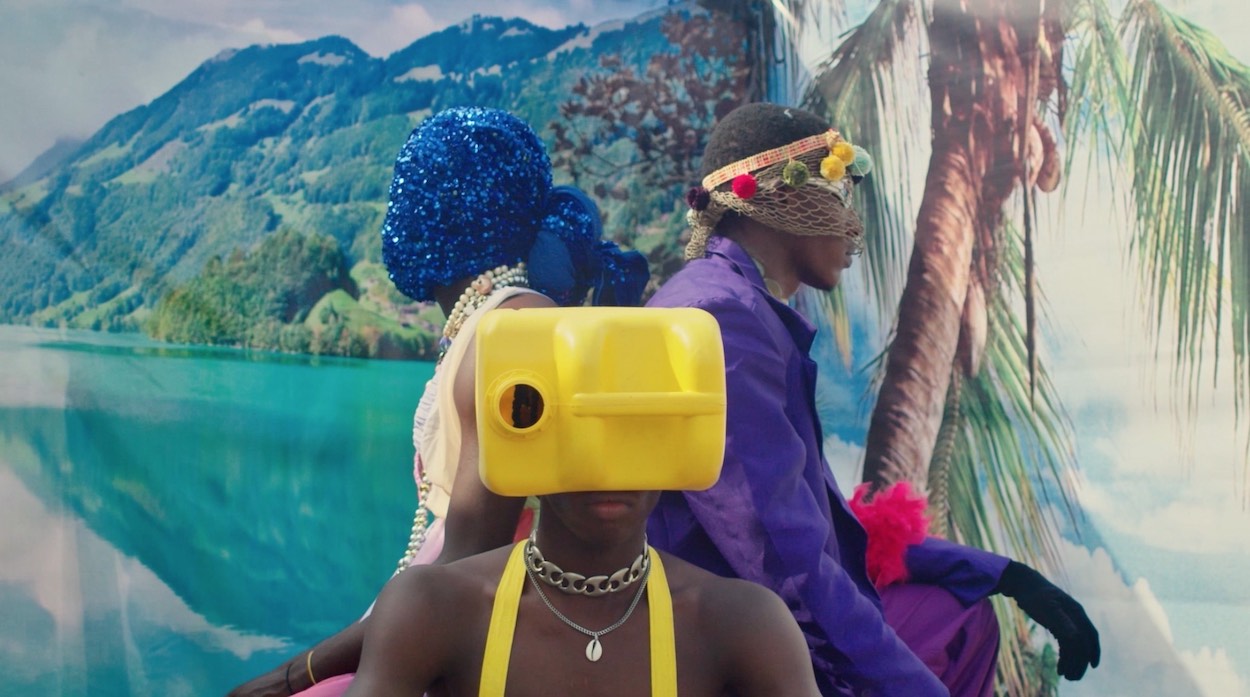
Your music videos have a real party atmosphere what do you do to keep the energy up on set?
I try to exude the energy I want to see on set.
There is a recurring theme of face-coverings in your work, from veils to intricate bejewelled headpieces to futuristic eyewear. Where does this fascination stem from?
Face coverings give me the opportunity for world building and gives me the freedom to create never before seen characters. Growing up in Nigeria in the 2000s, I was always intrigued by a Nigerian musician named Lagbaja. No one ever saw his face because he always had a covering over it. I believe that’s where my initial fascination stemmed from.
What was the inspiration behind the short film Alkebulan: Viva Africa?
The subject matter was inspired by an interview with a Nigerian musician, Fela Kuti, who spoke about Colonial Mentality and its effects. The initial inspiration behind the visuals came from an album cover I stumbled on ‘137 Avenue Kaniama’ by Congolese rapper Baloji. The rest of the film morphed into its own thing after that.
Did you encounter any challenges while shooting the film?
Absolutely, the project was executed in Nigeria and it was filmed three times. The first time it was filmed, we ended up losing the SD card and lost all files. We decided to film it again within a week. I was so lucky to have such an amazing and talented team that did all they could to make it happen again while I was still in the country(Nigeria) on vacation. After we filmed it a second time, I arrived back home to the US at the beginning of the lockdown, only to receive word from the editor that the files somehow all had gotten corrupt on the external hard drive that we shot the footage on and so we ended up losing our footage a second time. I was devastated but about six months later, I went back to Nigeria to film it a third time. This time I added fresh scenes and made changes to the art direction and looking back, I would’ve preferred these changes compared to what I originally started with. I would say it was a challenge but also a blessing in disguise.
Your work is filled with bright colours and a wonderful wardrobe – from pom-pom bikinis, to floral housecoats, to neon green zebra print leotards. Is costume design a crucial part of your initial vision for a piece? Do you work closely with a designer?
Costume design is an extremely crucial part of my process when creating a film, It is usually very thoroughly thought out and so far I’m quite hands on in the decision process. In the past I have worked closely with a designer who has made it all possible.
What was your initial route into filmmaking?
I started as a dancer. I always knew dance for me was a route to something else, I never wanted dance as a career. I just didn’t know where exactly dance would lead me. In 2017-2018, I created dance videos online and I put a lot of thought into my costumes, filming locations and overall art direction for these videos. I ended up being really drawn to the production aspect of the process, which was basically how I found my way into filmmaking.
For Mkpuru Obi, your directing partner was Yemi Osokoya. Tell us a bit about the experience of working in a directing team. What did you learn from each other?
While working together, we allowed for the film to flow in the direction that it wanted to. We’re both strong believers of not forcing art and letting the art tell itself. We didn’t go there with a plan, we bought costumes and improvised. So we have similar creative processes.
Movement and dance are so key to your filmmaking. Is the choreography something you carefully plan in the early stages of creating your film, or do you adopt more of an actor- led improvised approach?
It really depends on the project. I’ve found myself mostly using an improvised approach in the past. I tend to gravitate towards improvising on dance but other subtle body movements may be choreographed. In my next film I will most likely follow a choreographed approach. In my previous films I allowed the dancers to improvise and did what came from the heart rather than choreography.
Is there anything else you’d like to mention? What are you currently working on?
Currently I’m working on a short film that will be in production soon.
Interview by Becca Nichols
INFO:
@norachinwee
















